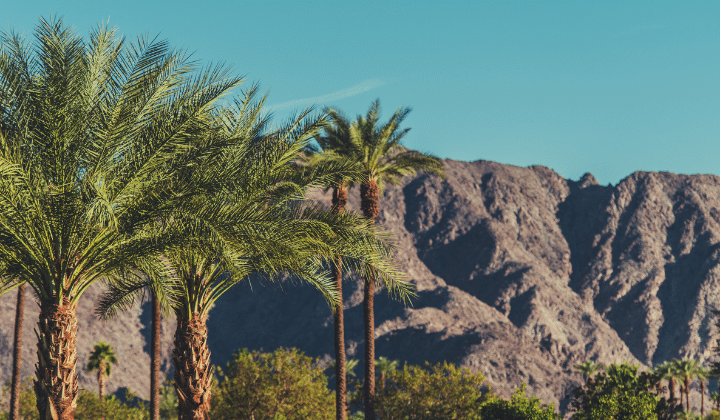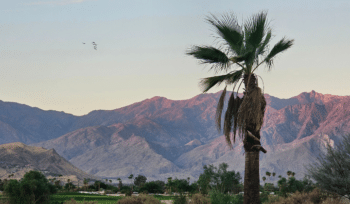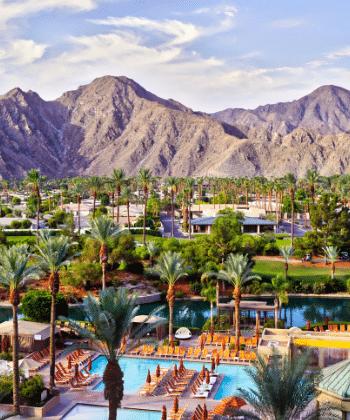
-
by VPSO Team
- March 20, 2025
- 0 Comments
Nestled in the sun-soaked Coachella Valley, Palm Springs is more than just a desert oasis—it’s a living, breathing time capsule rich with cultural significance and architectural allure. Its story unfolds like a tapestry, weaving together the lives of Native Americans, glamorous Hollywood stars, and visionary architects. Whether you’re wandering its streets or gazing at the dramatic San Jacinto Mountains, Palm Springs invites you to step back in time while enjoying its timeless charm. Join us as we explore the vibrant history and striking architecture that define this desert gem.
The Native Roots of Palm Springs
Long before the mid-century glamour and modernism, Palm Springs was home to the Agua Caliente Band of Cahuilla Indians. For thousands of years, these indigenous people thrived in this arid landscape, relying on nearby natural springs—hence the name “Palm Springs”—as a vital water source. The Agua Caliente were master stewards of the land, carving out an existence in the desert by cultivating mesquite beans, dates, and other native plants.
Today, you can still trace their stories by visiting sacred sites like Tahquitz Canyon and Andreas Canyon. These historic locations not only showcase the ingenuity of the Cahuilla people but also offer a connection to Palm Springs’ earliest inhabitants. Ancient rock art, cool streams, and towering palms stand as a testament to their enduring legacy.
A Hollywood Hideaway in the Desert
By the early 20th century, Palm Springs had transformed from a quiet desert town into a relaxing retreat for the elite. The dry climate and hot springs attracted visitors seeking rest and rejuvenation, while the secluded desert landscape worked wonders for Hollywood stars looking to escape the glare of the spotlight.
During the 1930s and 1940s, the town became a favorite playground for the likes of Frank Sinatra, Marilyn Monroe, and Elvis Presley. The town’s infamous “Two-Hour Rule,” a guideline for actors to remain within two hours of Los Angeles while filming, secured its status as Hollywood’s desert hideaway. The Movie Colony neighborhood, named for the celebrities who called it home, still stands today—a charming collection of estates that transport you straight back to the golden age of cinema.
Adding to the allure were lavish resorts like the iconic La Quinta Hotel and The Racquet Club of Palm Springs, where poolside cocktails and glamorous soirées became the norm. These establishments not only drew the famous but also helped define a new era of upscale leisure in the desert.

The Rise of Mid-Century Modern Marvels
Palm Springs’ architectural rebirth began in the mid-20th century, when the city became synonymous with mid-century modern design. This clean, minimalist, and functional style was a perfect match for the desert landscape. Inspired by the Bauhaus movement and the simplicity of modernist design, architects like Richard Neutra, Albert Frey, and Donald Wexler created homes and buildings that blurred the line between indoors and outdoors.
One of the most striking aspects of Palm Springs’ mid-century modern architecture is its daring use of materials and shapes. Steel-and-glass post-and-beam structures, butterfly roofs, and walls of sliding glass invite the desert environment to become part of the living experience. Famous landmarks like Kaufmann House and the Tramway Gas Station showcase this innovative approach to design.
Palm Springs’ neighborhoods are treasure troves of this architectural legacy. The Twin Palms and Racquet Club Estates neighborhoods, for example, are home to clusters of mid-century houses that look as modern today as they did decades ago. Every February, Modernism Week celebrates this golden era, flaunting vintage home tours, lectures, and events that draw architecture fans from around the globe.
Preserving Palm Springs’ Unique Legacy
Though modern development continues, Palm Springs remains fiercely protective of its heritage. Restored hotels like The Parker and The Saguaro merge retro sensibility with contemporary luxury, paying homage to the city’s past while catering to today’s visitors. Efforts to preserve mid-century modern gems and historical sites ensure that the city retains its unique charm.
Visiting Palm Springs is like stepping into a time machine—explore the early Native American settlements, soak up the Hollywood glamour, and marvel at the daring mid-century designs that shaped modern aesthetics. No matter where you look, this city’s history is written in its landscapes, streets, and architectural lines.
Whether you’re an architecture aficionado, history lover, or simply someone seeking desert serenity, Palm Springs offers a timeless story worth discovering. Pay a visit, and you’ll find that the past is alive in every sunlit corner of this extraordinary oasis.



